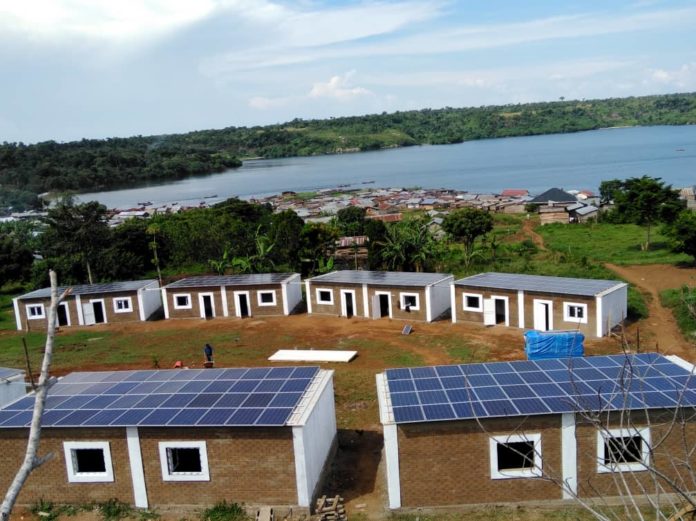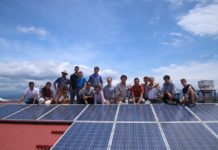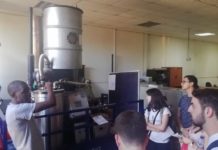by Eleonora Cherubini
On the 11th of January 2019 students and professors of the Field Study Abroad were ready to go on with their studies around the East Africa’s mini grids.
Our adventurous spirit brought us in the Victoria Lake, on a wild and green island more than 40 km far away from the Ugandan mainland. Bukasa is a pearl of the Ssese Islands and it welcomed us warmly. The forest is so wild and thick that overwhelmed us during the ride to the plant on the local Boda Boda. Before arriving on the plant, located on the top of a hill, we had a quick glimpse of the village Kisoba where almost 2000 people live. They live in simple houses made out of iron sheets or mud, which can be not stable and eventually dangerous. By now few people have their own panels but the city, at night, is completely dark.
As soon as I saw the plant it surprised and fascinated me and I can’t wait to see it working. Instead of a field packed with photovoltaic panels, Absolute Energy, the project developer and owner, decided to create a “community plant”, which seemed to fit better the needs and the profile of the society.
By a quick analysis of the outlook of the plant of 96,8 KW, it is necessary to point out the most important parts of it. There are eight houses, with 44 panels each (22 panels per string), which create a sort of amphitheater. There are two control panels into which the houses are connected four by four in parallel. Then two cables go to the inverter, located (with the batteries) in one of the eight houses, and those are connected in parallel again. If we had to summarize the function of the inverter, it is easy to think about it as the brain of the plant. It has the Pv panels and the batteries connected in dc and the disagenerator (64 W) in ac. The disagenerator has a backup function and it helps to recharge the batteries when they arrive under 20%. That is important to preserve the life of the lead-carbon batteries. The batteries have an essential role in the plant. There are two strings of 218 batteries, with a total capacity of 200 KWh and a power of storage of 100 KW. The BMS keeps track of the state of charge of the batteries, the temperature and other important values. Beside this strings of batteries, there is an extra one, called UPS, which is an emergency battery. If there is a problem this battery ensures that the data storage doesn’t turn off.
I like seeing this plant as a big amphitheater because in the big space in the middle the big show of the village is going to take place: the daily market. Colors, spices, fruit, fish ,smells and a big crowd are going to be the protagonists of the project and this is the real objective of this innovative way of seeing a power plant. This is the reason we can call it “community photovoltaic plant”. It creates job opportunities, ides of new businesses and it could also be the beginning of a new way of building houses.
Each house might be a café, a cinema, a bakery and a place where the fishermen can dry the fish.
Every house is made out of bricks, made in the island with a mechanical press, and this way of building houses not only gives the opportunity to start a new manufacturing business but improves also the security of the civil works.
The Ssese islands are populated with mainly fishermen: the realization of business differences might help the settlement of families. This concept seems banal but it is a main point for social and health empowerment.
In the end, three words can describe perfectly this project: light, security and social growth. These three words are not only concepts but they are goals that an engineer needs to keep always in mind in his projects and it is great to have been a part of it.






